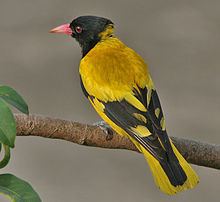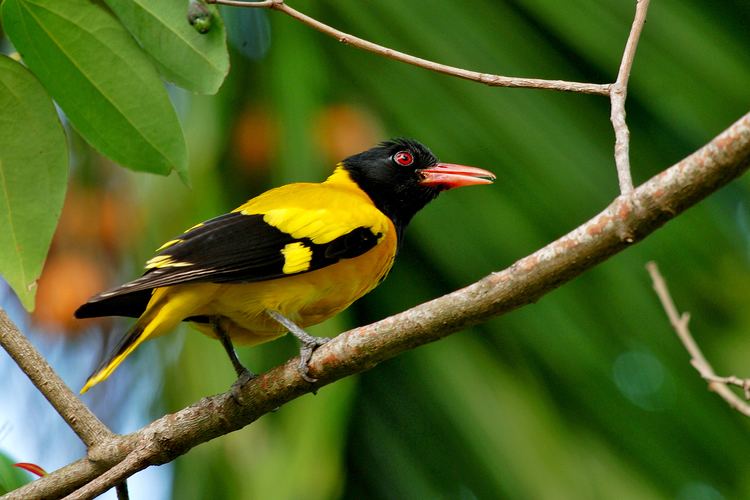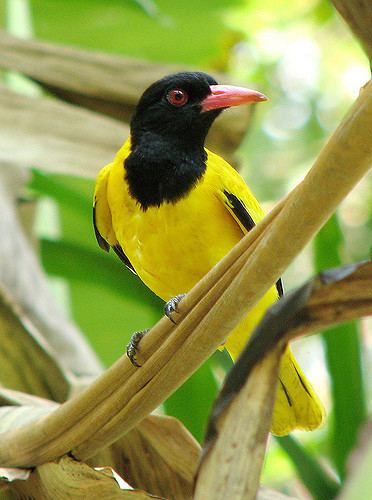Order Passeriformes | Phylum Chordata Family Oriolidae Scientific name Oriolus xanthornus Rank Species | |
 | ||
Similar Bird, Old World oriole, Oriolus, Black‑headed oriole, Iora | ||
The black-hooded oriole (Oriolus xanthornus) is a member of the oriole family of passerine birds and is a resident breeder in tropical southern Asia from India and Sri Lanka east to Indonesia.
Contents
- 20131215 black hooded oriole calling
- Taxonomy and systematics
- Subspecies
- Description
- Relationship to humans
- References

It is a bird of open woodland and cultivation. The nest is built in a tree, and contains two eggs. Its food is insects and fruit, especially figs, found in the tree canopies where they spend much of their time.

20131215 black hooded oriole calling
Taxonomy and systematics

The black-hooded oriole was originally described in the genus Coracias. Alternate names for the black-hooded oriole include the Asian black-headed oriole, black-headed oriole, Indian black-headed oriole and Oriental black-headed oriole.
Subspecies
Five subspecies are recognized:

Description

The male is striking, with the typical oriole black and yellow colouration. The plumage is predominantly yellow, with a solid black hood, and black also in the wings and tail centre.
The female black-hooded oriole is a drabber bird with greenish underparts, but still has the black hood. Young birds are like the female, but have dark streaking on the underparts, and their hood is not solidly black, especially on the throat.
The black head of this species is an obvious distinction from the Indian golden oriole, which is a summer visitor to northern India. Orioles can be shy, and even the male may be difficult to see in the dappled yellow and green leaves of the canopy.
The black-hooded oriole's flight is somewhat like a thrush, strong and direct with some shallow dips over longer distances.
Relationship to humans
The black hooded oriole lives in common contact with humans in rural and urban India.
A folk tale from Bengal says that the origin of the bird is from an unfortunate wife of a merchant family. The girl was tortured by her mother-in-law who used to make her starve for the slightest mistake. In one such occasion the girl was starving for two days and yet she had to make pithas (a handmade sweet dish of Bengal). The girl, who could not bear her hunger any more started eating hot pithas directly from the vessel as her mother-in-law was out of sight. Her garments was already stained by the turmeric paste she used for the cooking of other dishes. Suddenly the mother-in-law came and in utter shock the girl jumped into a nearby pond. She died but the goddess that protects the children made her into a bird with the head covered with black soot from the earthen vessel and body a yellow as turmeric paste, the black hooded oriole. For this reason the Bengali name of the bird is "benebou" which means the merchant's wife.
